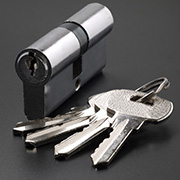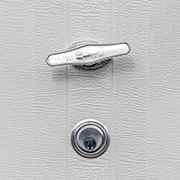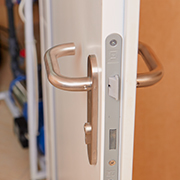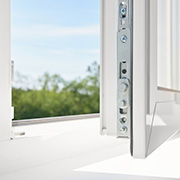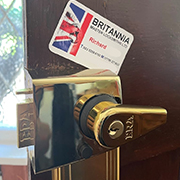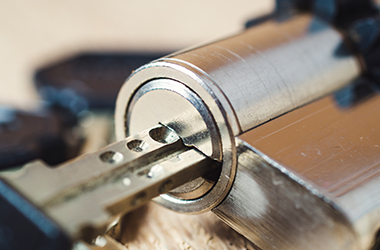If you want FREE advice with NO obligation, contact me today.
Lock Identification
Find the lock you need to replace or repair
Cam Locks
This type of lock comes in 3 main types standard profile, single or double sided key or tubular keys.
They are used on types of doors from mail boxes, gym lockers, school lockers, filing cabinets, game machines, vending machines, metal/wood cabinets & many more… The list really does go on and on.
The security level of this type of lock is very low and therefore they are generally used on low security containers.
Needless to say we can repair it, replace it or upgrade it.
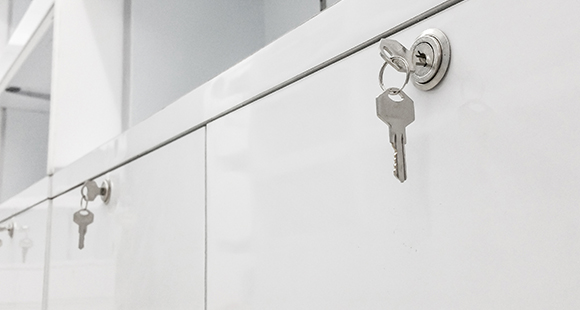

Garage Door Locks
Garage door locks, also known as T-handles, come in a variety of sizes (long lugs, short lugs, square spindle, and diamond spindle).
There are also quite a number of garage doors that are fitted with half euro/oval profile cylinders.
Because security is poor with this type of lock a popular solution for securing the 'up and over' garage locks are the Enfield garage bolts.
They provide additional security to the standard lock and are suitable for single or double garage doors.
A further advantage with the Enfield Bolts is they can be keyed alike, so if you have a number of garages you can make your job easier when it comes to opening them by having the same key for all the locks.
Mortice Locks
A Mortice lock fits into a slot cut out of the door, with a key hole on either face of the door, and its striking plate fits into a slot cut out of the frame. A mortice lock is deadlocking (i.e. can only be opened with a key).
Strong locks are essential therefore always choose one which conforms to British Standards. Most home and contents insurers recommend a BS five lever mortice lock as a minimum. It is the most secure type of lock to get past it without a key means the door frame itself has to be broken.
The more levers that a key has to work, the harder it is for anyone to pick the lock. Sash locks are deadlocks with a built in latch so they do require handles with them.
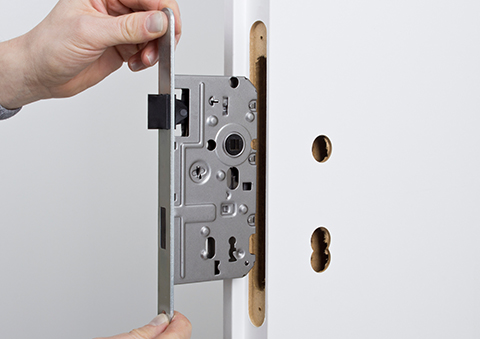
Three Lever Deadlocks
The three lever mortice deadlock should be considered as the lowest form of security for a door, It is recommended that a 3 lever deadlock is replaced by a five lever BS3621 deadlock as soon as possible.
Five Lever Deadlocks
A grade down from British Standard deadlocks is the standard five lever mortice deadlock offering moderate protection to main doors in your home, office or retail department.
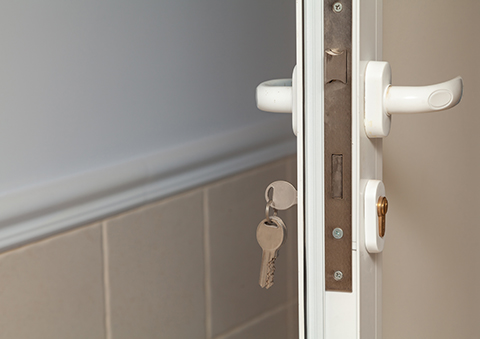
British Standard Deadlocks
BS standard mortice deadlocks, conforming to British Standard number BS3621: 1998 for Thief Resistant Locks.
This is a high security mortice door lock that has been rigorously tested for burglar resistance. This type of door lock has a single 'dead' bolt that is locked and unlocked with a key.
It is embedded in the door for extra strength, providing exceptional security and is specified by many insurance companies.
It offers excellent protection against all common forms of attack including lock picking, force, drilling, manipulation and hacksaw.
Night Latch Locks
Night latch is the correct terminology for what most people call a Yale lock.
It is simply a latch operated by a turn from one side and by a key from the other side (Rim Cylinder).
Sometimes they are called slam locks, due to the reason that once the door is closed behind you need a key to come back through the door.
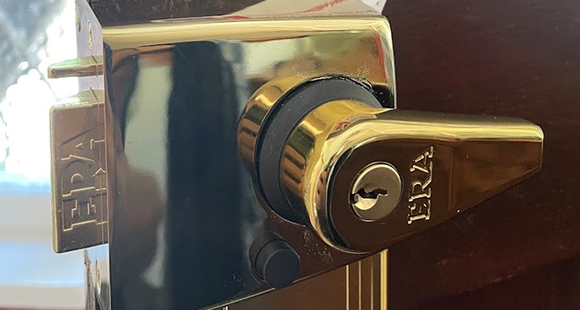
Non-deadlocking
These locks always need a key to unlock them from the outside. The latch can be deadlocked in an open or closed position by sliding the button on the inner face.
These sorts of locks are really at the bottom of the pile for security and were being supplemented with mortice deadlocks by the late 1960s.
If your door has a multipoint lock then there will be a latching bolt in the middle of the door that is operated by the handle.
Key Deadlocking
The rim night latch with lockable internal handle. These locks are the same as the night latches except you can deadlock the latch from the outside with a turn of the key.
This means that the latch cannot be slipped with a piece of plastic. Some of them also allow you to lock the turn knob on the inside with the same key (instead of the button) and this will prevent slipping from outside and the knob being turned by sticks, cables and so on through the letter plate.
Automatic Deadlocking
These differ from the above two in having a deadlocking pin just above or below the latch.
When you close the door the pin is depressed into the mechanism and it deadlocks the latch, which will prevent slipping

Rim Locks
A rim lock is a type of door lock that is mounted on the surface or "rim" of a door rather than being set into the door itself. It is typically installed on the interior surface of the door and consists of a locking mechanism and a latch bolt. Rim locks are often visible on the face of the door and are popular for both residential and commercial applications.
The basic components of a rim lock include a key-operated cylinder, a latch bolt, and sometimes a deadbolt for added security. Rim locks are relatively simple to install and are often used in conjunction with other types of locks for enhanced door security.
These locks are commonly found in older homes and historical buildings, and they may have a traditional or antique appearance. While rim locks may not offer the same level of security as some modern embedded locks, they can still be effective and are valued for their aesthetic appeal in certain settings.
Call Richard today FREE advice into your lock and security needs
If you can't find your lock here, get in contact and we will assist you in lock identification, and see what we can do for you. We're here to help!
Get in contact with Richard for a chat and quote for your lock repair. Britannia Locksmith in Waterlooville is always here to help.

Britannia Master Locksmiths LTD is registered as a limited company in England and Wales under company number 5876126.



